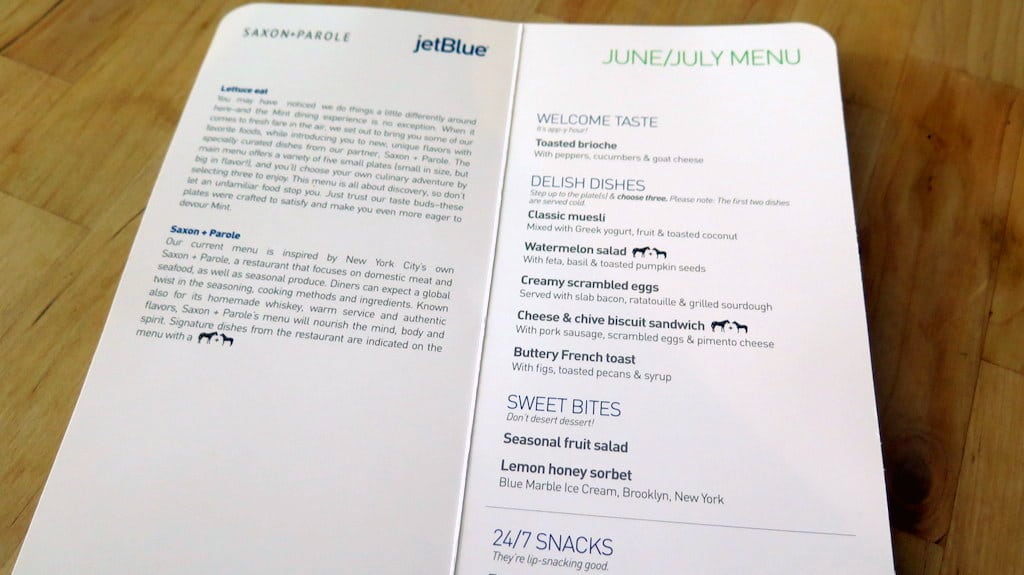How JetBlue Decides What Food to Feed Its Flyers

Skift Take
For two years, Nicole Huang has wanted to put instant oatmeal on JetBlue flights.
Huang, manager of JetBlue’s onboard experience, believes it would sell. But she has yet to persuade her colleagues it makes sense. Some question whether flight attendants could meet customer expectations. How much water would the flight attendants pour? Would the the standard be a soupy oatmeal? Or a thick one?
That’s not the only issue. JetBlue flight attendants do not use carts, so they’d have to carry near-boiling water from the galley to, say, seat 10B. JetBlue solved this problem with coffee by giving customers tight lids, but there has been no similar breakthrough for oatmeal packaging.
“There are just too many concerns about oatmeal,” Huang said. “I’m working on it. We’ll find a way to make it match the JetBlue customer experience.”
At JetBlue, nothing in the onboard food program is chosen haphazardly. Huang and her small team evaluate each product, whether it’s sold on its own, like oatmeal, or in a snack box. In addition to considering obvious questions, such as whether the item offers a reasonable profit margin, the team weighs less apparent ones.
Does the food fit with JetBlue’s brand? Can flight attendants serve it easily and consistently? Can the packaging hold up to the rigors of hundreds of takeoffs and landings? And, in many cases, can the food remain fresh for several months without refrigeration?
The refrigeration issue is key, as JetBlue only serves fresh food, like sandwiches, on limited flights. That stuff is particularly vexing because JetBlue must toss out what it does not sell and no mathematical model can predict perfectly how much food to board. “With the fresh product, I think it’s safe to say no airline is making money off of it,” Huang said. Since the economics are better for snack boxes and other shelf stable items, the team is constantly scouring for items that can last for several months.
The goal is to move beyond the staples of dried meats and fruits, hummus, chips, applesauce and cheeses. At a recent trade show, Rebecca Gottlieb, a member of the team, was practically giddy about two shelf-stable items — cream cheese and guacamole. “A bagel and cream cheese is so New York,” Gottlieb said. Ideally, one supplier would package the items together and include a knife, so JetBlue wouldn’t need to rely on caterers to stock each piece.
Packaging is an important part of the enterprise. Gottlieb sometimes flies with items on her wish list to ensure the packaging can handle the rigors of flight. Will the plastic wrap hold its shape through repeated takeoffs and landings? “There’s an incredible amount of science involved in what makes it onto an airplane,” said Ben Kaufman, another team member. JetBlue usually asks manufactures to provide packaging with little air inside. “With cheese, it might look totally fine on the ground, but in the air, the packaging can expand,” Huang said.
It is not easy to sell items to JetBlue. It’s a low margin business, so JetBlue squeezes manufacturers for deals. Vendors generally only want in if they’re seeking maximum publicity for their product. But there are no shortage of interested companies, who constantly send samples to JetBlue headquarters.
“If I am away from my desk for a few days, I can pretty much guarantee there will be a pile of food on it when I return,” Gottlieb said. At some food shows, airline employees turn over their badges so no one can see their employer. “They will physically grab you,” Kaufman said.
JetBlue has to be smart because snack boxes are not big money makers. In part, that’s because JetBlue gives away so many for free. Flight attendants might give a box away to a customer whose television is broken. Or someone might just take one. “It can grow legs and walk away,” Gottlieb said. The same goes for booze. While beer and wine should be high-margin, JetBlue gives much of it away.
For now, the bulk of food sales come from five boxes, all of which sell for $6 and have cute names like “Beef Up,” “Shape Up,” and “Mix It Up.” By far the biggest seller is the “Beef Up,’ which, with its salami and two types of cheese, is likely the least healthy. The box accounts for a bit more than 30% of all sales, even though, on the ground, passengers tell JetBlue they’d actually prefer to buy healthier options.
“When you are up in a pressurized tube at 35,000 feet, you are going to go for stuff like Doritos,” said Rebecca Gottlieb, a member of Huang’s team “It’s more comfort food.”
But that hasn’t stopped JetBlue from trying to get passengers to try healthier options. Earlier this month, the airline said it will soon serve snacks promoted by AccelFoods, a company that provides investment funding to food companies with unusual products, on some coast-to-coast flights. JetBlue hasn’t said exactly what it will serve, but the AccelFood portfolio includes protein bars made from crickets and alternative nut butter spreads.





